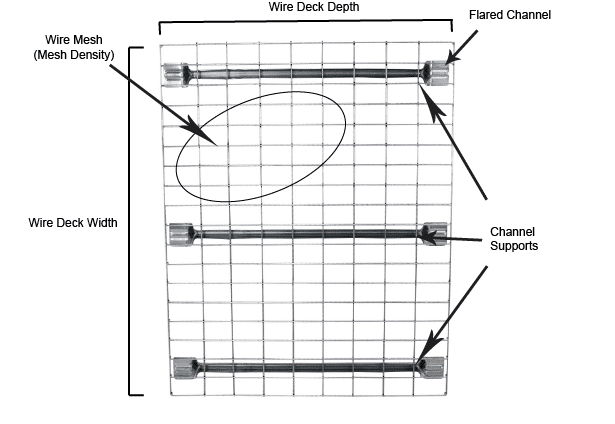Welcome to our Pallet Rack Guide! This page introduces pallet racking and related products. Learn about your current or future pallet rack systems today! For information about used pallet racking, see our used pallet rack guide. If you have any specific questions, don’t hesitate to call us at 888-578-1578.
Pallet Racking
What is Pallet Racking?
Pallet racking is a large-scale storage system used in warehouses and storage facilities across the globe — pallet racking stores palletized products or products that are bundled together on a pallet. Warehouses with pallet racks require forklifts to shift and lift products to multiple levels.
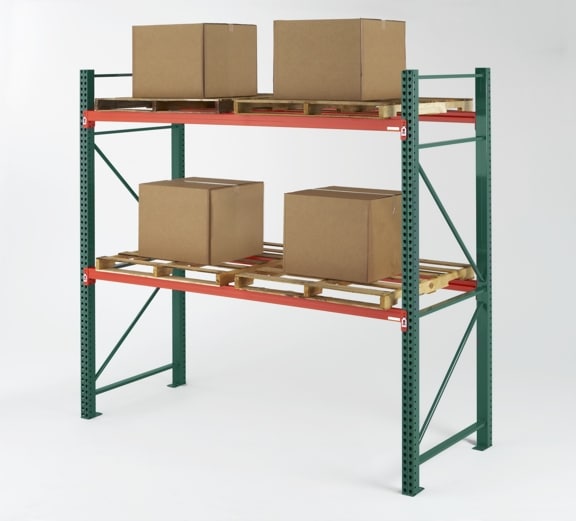
Types of Pallet Rack Systems
There are many standard and engineered rack systems for different warehouses and operations. The six most common pallet rack systems are selective, push-back, drive-in, pallet flow, carton flow, and cantilever. See our pallet rack systems below:
Selective Pallet Racking
Selective racking, or “standard racking,” is pallet racking in its most basic, bare-bones form. At its core, a single pallet racking unit consists of two upright frames and two horizontal beams, creating a shelf level (see more on these components below). The height, depth, width, capacity rating, and number of beam levels are entirely customizable for a selective pallet rack system.
There are two types of selective pallet racking – roll-formed and structural. Roll-formed racking typically comprises selective rack systems. Steel is cold-rolled into the correct shape making roll-formed racking easy to assemble. Roll-formed racking is for lower capacity applications than structural rack.
Structural racking uses hot, raw iron that is hot-rolled into steel channels and bolted together. Structural racking is heavy-duty and can withstand a much higher impact than roll-formed racking.
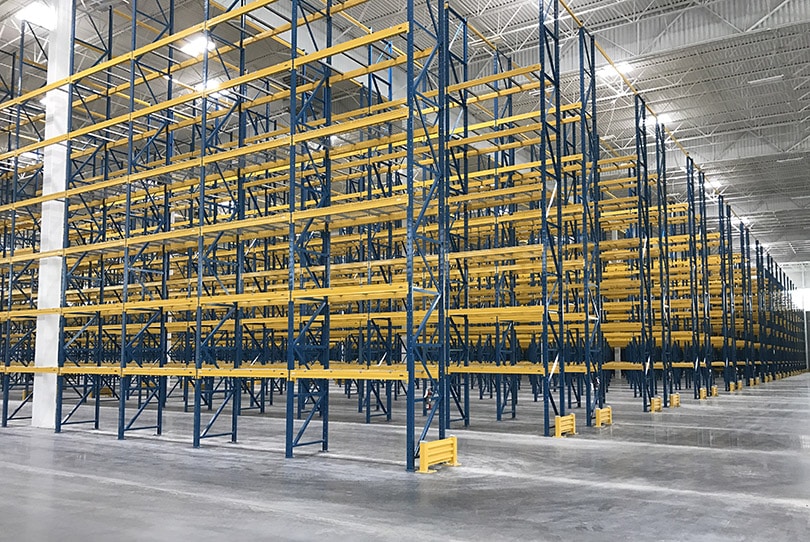
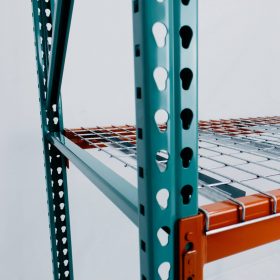
Pallet Rack Frames
Frames, also known as “upright frames” or “upright columns,” bring the vertical height to pallet racking. Pallet rack frames serve as upright columns with punch holes along the entire length of the front face for beams to connect. Teardrop pallet racks are the most common and are often compatible with other rack brands.
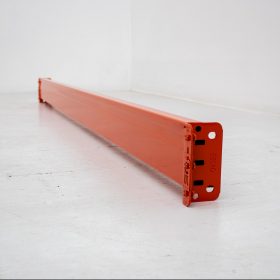
Pallet Rack Beams
Beams attach to frames to create a single shelf level. Pallet rack beams have rivets on their end connectors which slide into the punch holes on the frame columns. Both beams and frames come in many lengths/heights and thicknesses, which adjust their capacity ratings.
Push-Back Pallet Rack
Push-back pallet rack systems are a high-density storage solution. These systems are loaded from a single aisle.
Forklifts load pallets onto rolling carts from a single point. One pallet pushes the next back until the entire row (up to six pallets deep) is full. These storage systems are last-in, first-out systems great for storing multiple pallets of the same SKU.
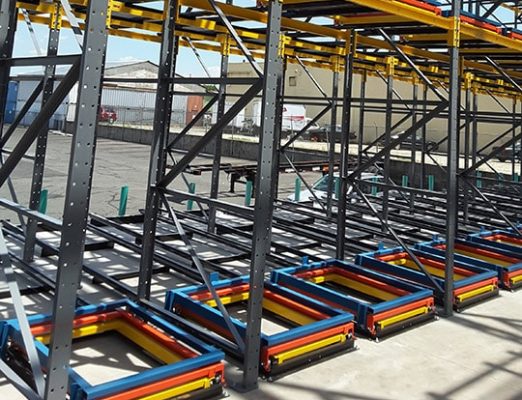
Drive-In Pallet Rack
Drive-in racking is another high-density pallet rack system that eliminates the need for multiple aisles. Typically, these storage systems stand against a wall. If not, they become a drive-through system where forklifts drive in one end and out the other.
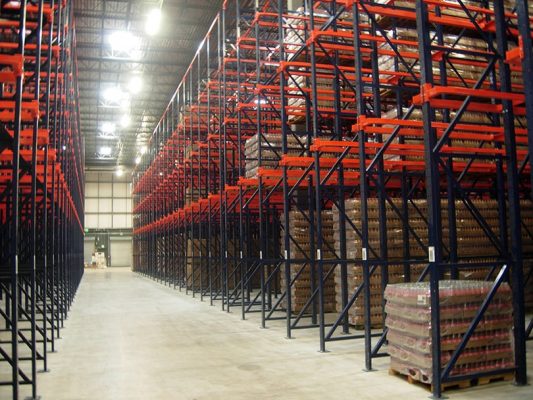
Pallet Flow Rack
Pallet flow or gravity flow racking utilizes angled metal roller platforms to load and retrieve pallets. When loaded, gravity pulls pallets into the pallet rack system for picking later on. Pallet flow is another space-saving storage system that only requires an aisle for loading and an aisle for unloading.
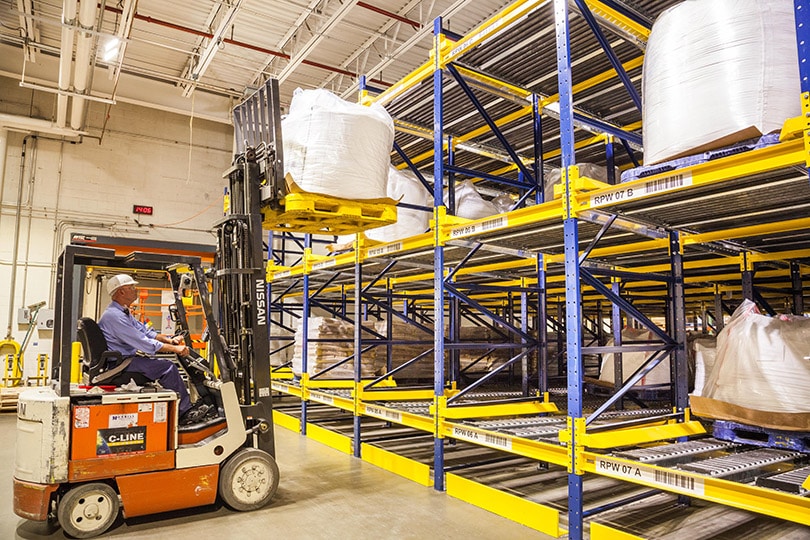
Carton Flow Rack
Carton flow rack is similar to pallet flow but for smaller products and cartons. This pallet rack system works excellently for fast-paced warehouses with consistent picking and many products.
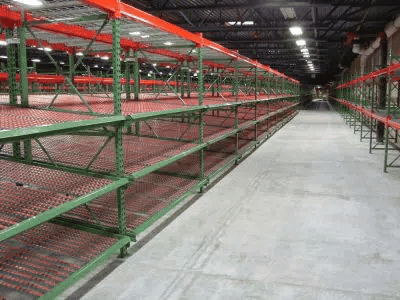
Cantilever Rack
Cantilever racking is a different design than other pallet rack systems. Rather than consisting of two frames and multiple beam levels between them, a single upright column rises in the center of the system. Cantilever arms branch out from the upright like tree branches. Cantilever racking is great for storing long, thin items like pipes, carpet rolls, lumber, and more.
There are many different manufacturers and styles of pallet racking with varying punch holes, columns, capacities, etc. View our Pallet Rack Identification Guide for help identifying which style or manufacturer your pallet rack is.
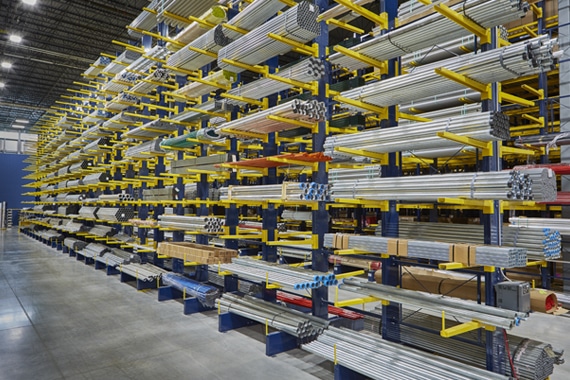
Standard Pallet Rack Design
Starter Bay Components
A standard starter bay consists of two upright frames and at least two beam levels. Each beam level requires two beams – a front and back beam. In the example below, the starter bay alone consists of two upright frames and four beams total.
Add-On Bay Components
Add-on or “adder bays” are any bay following the starter. Adder bays only require one upright frame as their beams connect to the previous bay’s upright.
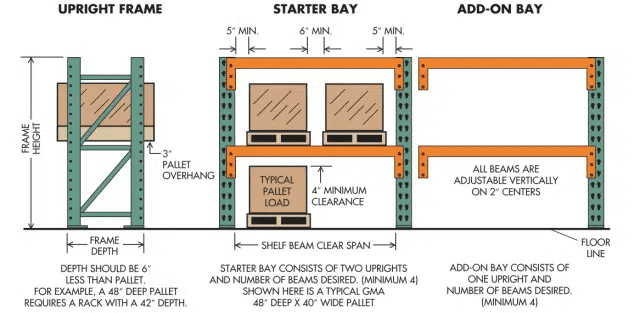
How to Choose Pallet Racking
Choosing the Right Frames
When ordering pallet racking for your warehouse, the size and weight of your pallets is the main deciding factor. For forklifts to safely access and move pallets, there must be at least a 3″ overhang on either end of your pallet rack frame (see the diagram above and to the left). You never want uprights that are the exact depth as your pallet, or your pallet may fall through the system.
Frame Height Calculation
(height of pallet + height of beam+ 4″ vertical clearance) x number of levels
Frame Depth Calculation
(width of pallet – 6″ for proper overhang)
Choosing the Right Beams
When ordering beams, follow these spacing requirements. There must be a minimum of 5″ between either frame and a pallet. Multiple pallets on the same level must be spaced a minimum of 6″ apart (see the diagram above and center).
Beam levels must be far enough apart so that there is a minimum clearance of 4″ from the top of your pallet to the bottom of the next beam level.
Beam Length Calculation
[pallet width 1 + pallet width 2 + (6” between pallets) + (10” side clearance)]
Choosing the Right Wire Decks
A typical beam level requires two or more wire decks to cover the whole bay. You will need to take the width of your beams and find wire decks that divide into that length.
For example, a 96″ beam would need two 46″ wire decks. A 144″ beam would need three 46″ wire decks.
Pallet Rack Add-Ons and Accessories
Pallet rack systems are highly customizable. Pallet rack accessories exist to form-fit the pallet rack system for each customer and application. Safety accessories protect products, personnel, and pallet rack systems from forklift damage, bumps, and falls. See our pallet rack accessories below and call us for help choosing the right components for your pallet rack system:
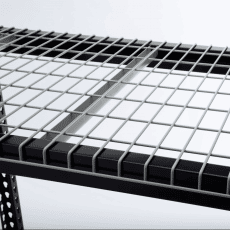
Wire Decking
Wire Decking creates a flat shelf surface between beams. Not every rack system needs wire decks, but they increase safety by preventing pallets from falling through the system. Read more about wire decking in our wire deck blog.
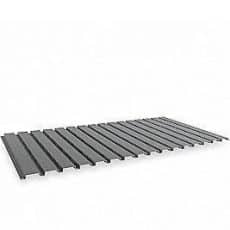
Corrugated Steel Decking
Corrugated steel decking is a more stable alternative to wire decking. These solid sheets of steel create heavy-duty shelves for higher-capacity products.
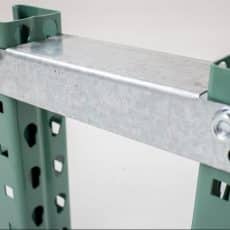
Row Spacers
Row spacers connect back-to-back rows of pallet racking, stabilizing the system and creating tidy, uniform rows.
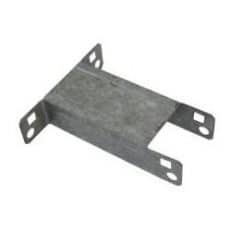
Wall Ties
Wall ties serve a similar purpose to row spacers but connect a rack system to the wall instead of another rack system.
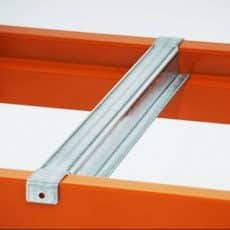
Pallet Supports
Pallet supports, similar to wire decking, prevent pallets from falling through a system. These steel bars hook over the edge of both beams and act as more horizontal surface area for pallets. Pallet support bars can be used alone or together with wire decking to provide additional capacity.
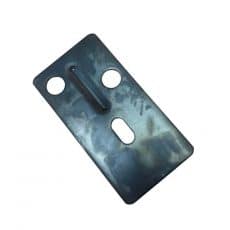
Shims
Shims are thin metal plates that, when placed beneath a column’s footplate, help to level out racking on uneven ground. Even a fraction of an inch difference is enough to throw off an entire rack system’s alignment.
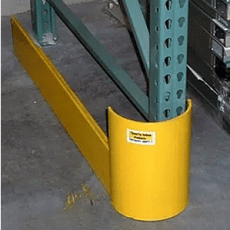
End of Aisle Guards
End-of-aisle guards like this Save-Ty Yellow Guard serve the same purpose as column protectors but specifically for the final frame of an aisle. The guard extends 36″ or more down the length of the upright frame preventing damage as forklifts turn the corner.
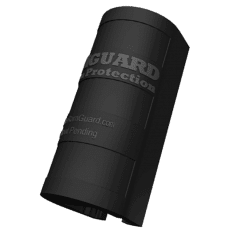
Column Protectors
Column protectors are a pallet rack safety product. These metal or rubber-coated sleeves mount directly on the frame columns or bolt into the floor in front of them. Column protectors fend against forklift damage.
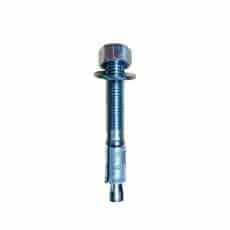
Anchors
Pallet rack anchors secure racking, handrails, column protectors, and more to concrete floors or other applications. These large bolts have heavy-duty holding power for warehouse products and daily use.
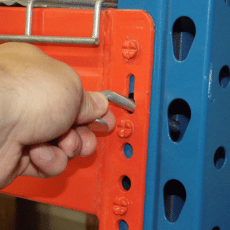
Safety Clips
Safety clips hold your beams in place and prevent disengagement from the upright columns. They are an essential safety piece for many pallet rack systems.

Hanging Shelf Dividers
Hanging shelf dividers separate products on the same shelf level. These dividers hang from the shelf above and attach to the lower shelf, creating a sturdy barrier.
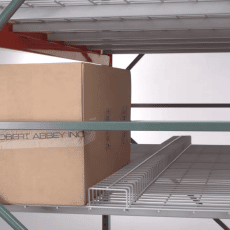
Flue Spacers
Flue spacers are an essential fire safety product. They create vents for fires and room for water to extinguish active flames.
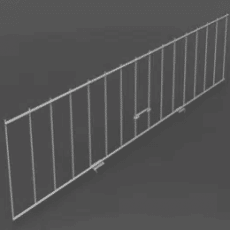
Standing Shelf Dividers
Standing shelf dividers serve the same purpose as hanging shelf dividers. Rather than hanging from the level above, standing shelf dividers attach to wire decking on the same beam level.
Pallet Rack Glossary
Pallet Rack Frame Terminology
Upright Column
Upright columns are the vertical, load-bearing piece of a frame. They contain punch holes every two inches for beams to connect. Pallet rack uprights can hold more or less capacity depending on their dimensions and the number of bends.
Baseplate/Footplate
Footplates are flat pieces at the bottom of an upright column that bolt to the floor. Seismic regions may require larger, thicker base plates to increase system stability.
Diagonal Lacing Channel
Lacing channels are hollow tubes that are welded to a frame, connecting both upright columns. Diagonal lacing channels are welded at an angle and increase the capacity and rigidity of a frame.
Horizontal Lacing Channel
Horizontal lacing channels are welded between the two uprights horizontally to increase system stability.
Punch Holes
Punch holes are where beam pins connect. They are typically placed every two inches up and down the upright column. The most standard, universal punch-hole design is the teardrop style.
Frame Height
Frame height is measured vertically from the base plate to the top of the frame. This measurement determines how many beam levels and what pallet height is allowed.
Frame Depth
Frame depth is measured horizontally from the outside of one column to the outside of the other. It determines what depth wire decking and what depth pallets will fit.
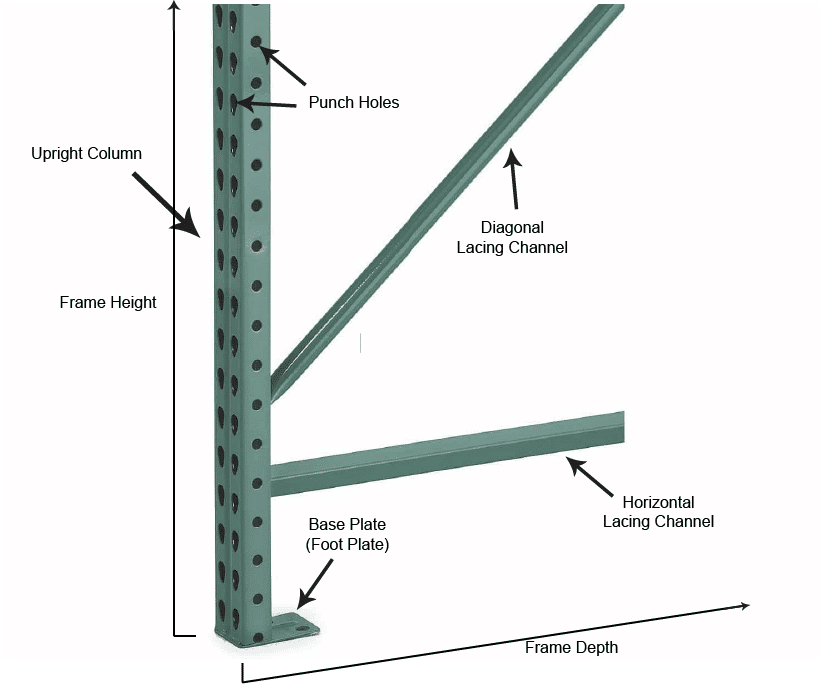
Pallet Rack Beam Terminology
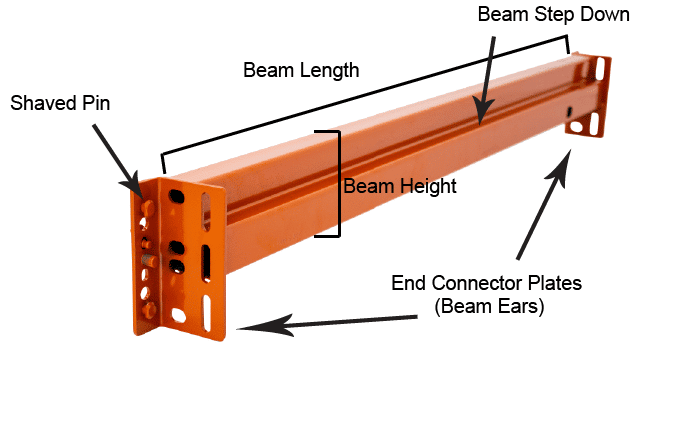
End Connector Plates
End connector plates (or beam ears) are the connecting piece between beams and upright columns. These connectors contain pins and punch holes.
Beam Step Down
Not every beam has a step down. The beam step down is a bend in the beam that creates a protruding lip for accessories like wire mesh decks, and pallet supports to rest on, increasing their capacity.
Pins (Shaved Vs. Round)
Beam pins are the small buttons that slide into the punch holes on an upright column. There are different shapes and styles, but the two main types are round and shaved pins. The shaved pin design is generally more universal.
Beam Length
Beam length is measured horizontally from the inside of one end connector to the other. This measurement determines how many/how wide of pallets can fit on a particular beam.
Beam Height
Beam height is the top to bottom measurement or thickness of a beam. The higher a beam, the more capacity it can hold.
Wire Deck Terminology
Wire Mesh
Wire decking consists of wire mesh. Wire mesh refers to the wiring pattern that you see below.
Mesh Density
Mesh density refers to the mesh pattern and how many wires there are in a particular area. The more wires, the higher the capacity.
Channel Supports
Channel supports are the long bars that support a wire deck. There are many different styles, such as U-channels or flared channels, as shown below. These tracks often rest on the beam step down to increase the deck’s capacity.
Flared Channel
Flared channels have a flat piece at each end that rests flush with the beam edge. The channel extends down to the beam step as the second point of contact. Two points of contact mean more capacity.
Wire Deck Width
A wire deck’s width is measured left to right. Width is the amount of beam space it will occupy.
Wire Deck Depth
Wire deck depth is measured front to back and needs to be the same as the frame depth to cover the space from one beam to the other.
